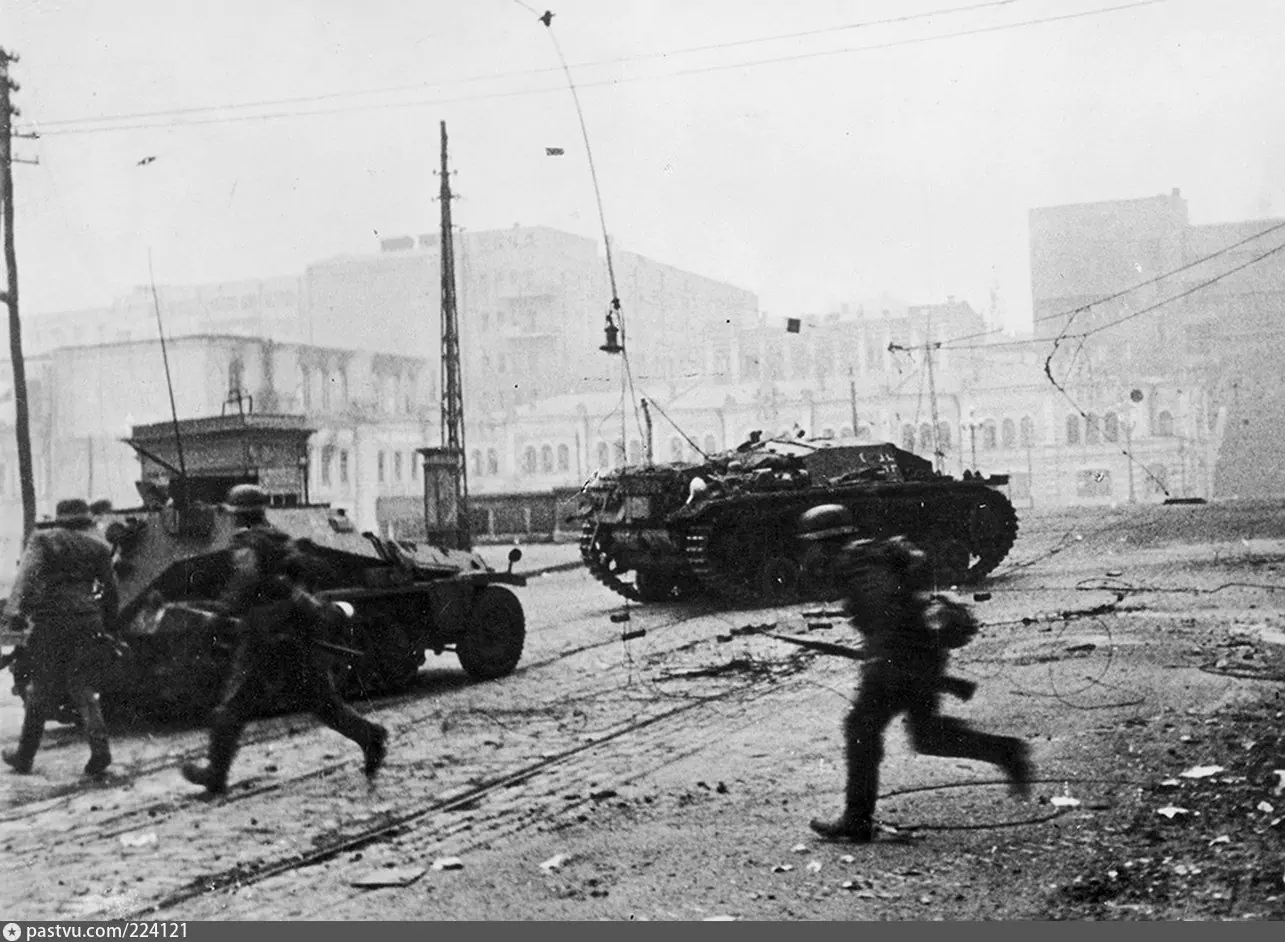Kharkov operation of 1941 (First battle for Kharkov, in some sources – Sumy-Kharkov defensive operation; October 1 – 29, 1941) – the battle of the initial period of the Great Patriotic War between the Red Army and the Wehrmacht for control over the Kharkov industrial region. As a result, the German troops managed to capture the city, but by this time almost all the most important industrial enterprises were either evacuated or destroyed.
Previous WW2 Operations & Events
Main article: Operation Barbarossa
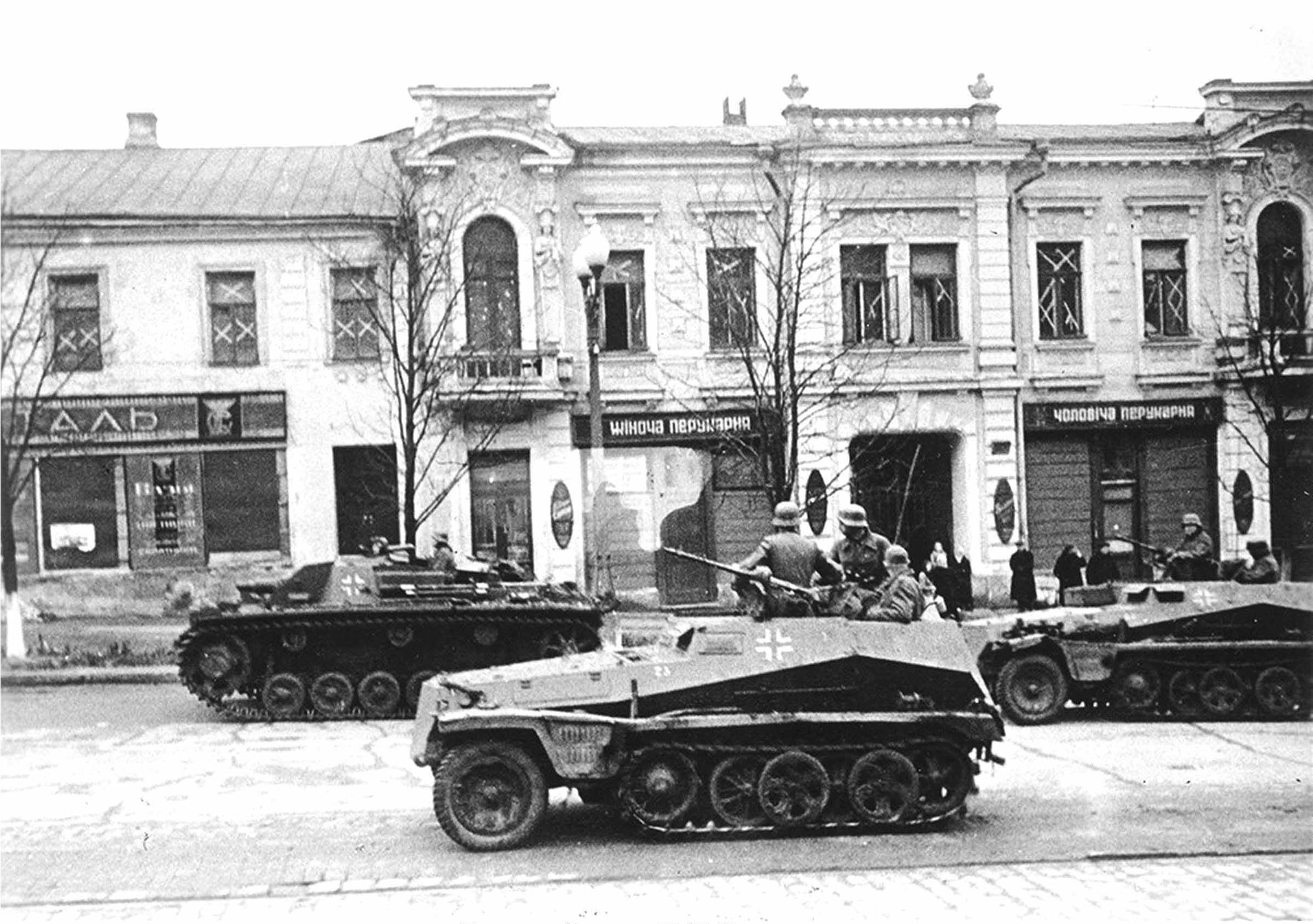
As a result of the defeat of the main forces of the South-Western Front in the Kiev pocket, the troops of Army Group South reached the Vorozhba – Gadyach – Poltava – Krasnograd line by September 20, 1941. A gap up to a hundred kilometers wide formed in the Soviet defense zone, the remnants of the troops of the Southwestern Front sought to recreate a new front line and close the gap. The troops of the Army Group “South” owned the initiative and were ahead of the Soviet troops in the speed of decision-making, coordination of actions and maneuverability. Since the German command, in accordance with the directive of the Supreme High Command of the Wehrmacht(OKW) No. 35 sought to release its tank and motorized formations for an offensive in the Moscow direction, the advance of German troops in this sector slowed down. In addition, a significant number of artillery and engineering units of the RGK were transferred from Army Group South to Army Group Center, which was carrying out an offensive against Moscow.
At the cost of enormous efforts and heavy losses, the Soviet command managed to restore the broken front. From the remnants of the troops of the former Southwestern Front, the reserves of the Headquarters of the Supreme High Command and forces transferred from the Southern Front, a new Southwestern Front was created, which was headed by Marshal of the Soviet Union S. K. Timoshenko.
Significance of Kharkov and Kharkov industrial region
At the end of the 19th century, the city of Kharkov turned into a major industrial center of the Russian Empire. With the development of rail transport, it also became the largest transport transit hub. In the period from 1917 to 1934, Kharkov was the capital of the Ukrainian SSR, which led to the further growth of the city.
During the years of the first five-year plans, during the period of industrialization, several largest industrial enterprises of all-Union significance were launched in the city and region. As a result, by May 1941, Kharkov was the first largest city in Ukraine with a population of 901 thousand people (at the same time, 846 thousand inhabitants lived in Kiev) and the third in the USSR, with a developed industrial, military-industrial and transport infrastructure. Being the largest transport hub in Eastern Europe, the city had a high concentration of population and a powerful mobilization resource.
Kharkov in Autumn 1941
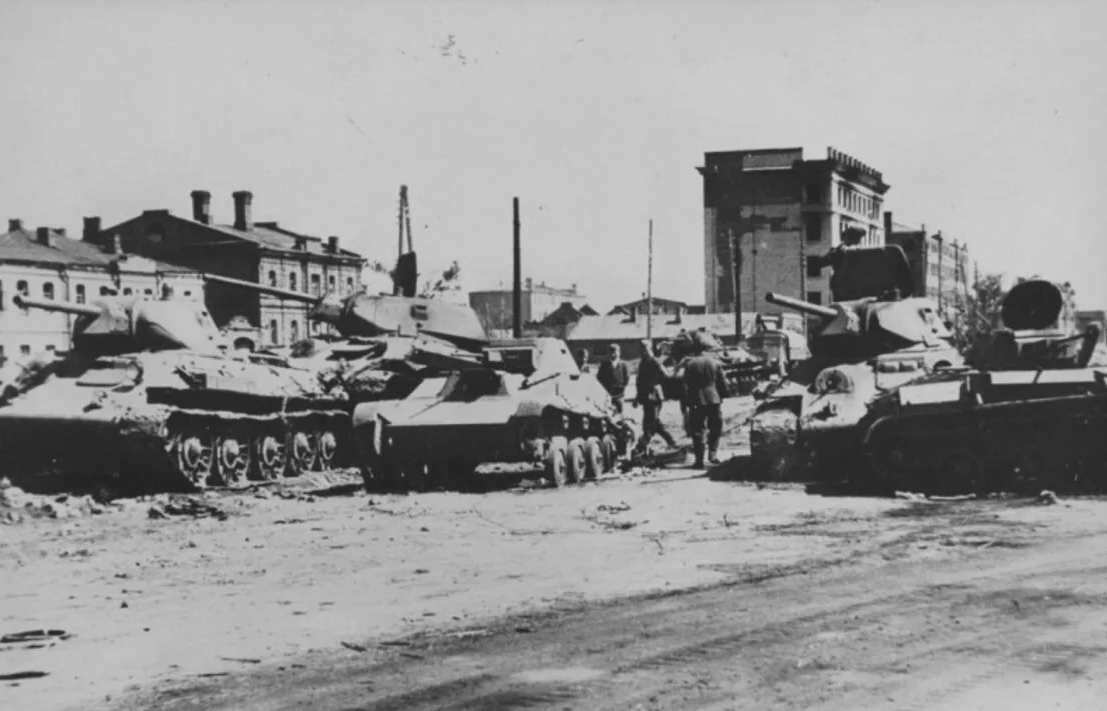
Tanks manufactured by the KhPZ named after the Comintern – the largest tank factory in the USSR: BT-7, A-20, T-34-76
The city was the headquarters of the Kharkov Military District. In the autumn of 1941, this district included Kharkov, Stalin, Voroshilovgrad and Sumy regions, in which about 30% of the population of the Ukrainian SSR lived before the war. From June to November 1941, more than 900,000 people were mobilized into the active army on the territory of the district, of which about 300,000 – in the period September-November. Quartermaster’s Academy operated on the territory of the districtThe Red Army and a number of military schools: armored, infantry (Kharkov and Akhtyrskoe), medical, communications, military-political, artillery (Kharkov and Sumy), military engineering, automobile, aviation, school of the NKVD troops.
In the autumn of 1941, several strategically important enterprises were concentrated in the Kharkov industrial region:
- KhPZ named after the Comintern is the largest plant in the USSR for the production of tanks (about 80% of the T-34 tanks produced in the country), in addition, the only enterprise in the country for the production of diesel engines for tanks and artillery tractors. The plant also produced steam locomotives and artillery tractors ” Comintern ” and ” Voroshilovets “.
- Kharkov Aviation Plant is the leading enterprise for the production of the Su-2 bomber.
- The Kharkov Tractor Plant is the largest enterprise in the USSR for the production of caterpillar and wheeled tractors. Since the beginning of the war, it was used as a tank repair company, and work was also underway to prepare for the production of T-60 light tanks.
- Kharkov Combine of the NKVD – created on the basis of the Children’s Commune. F. E. Dzerzhinsky, the enterprise specialized in the production of optical sights for sniper rifles and aviation optics. Every third sniper scope produced in 1941 was produced at the Kharkov plan.
Since the beginning of the war, all enterprises of the Kharkov industry, both large (Kharkov Turbine Plant, KhEMZ, Hammer and Sickle, and others), and small ones, were reoriented to the production of military products. The product range included 82 mm and 120 mm mortars, PPSh submachine guns, ammunition of all kinds and various military equipment.
By the beginning of the war, 70 research institutes, design bureaus and laboratories of various profiles were concentrated in Kharkov. Design Bureau KhPZ among them. The Comintern was the leader in the field of tank building, the Giprostal Institute was the general designer of 45 metallurgical plants, and the Ukrainian Institute of Physics and Technology conducted research in the field of nuclear physics. In 1940, the institute’s specialists filed an application for the invention of the atomic bomb, as well as methods for enriching uranium.
In the autumn of 1941, Kharkov was the largest strategic junction of railways, roads and air routes. This transport hub controlled not only the west-east and north-south directions of Ukraine, but also the southeast-northeast directions of the entire European part of the USSR south of Moscow. A railway line passed through Kharkov, connecting the central regions of the USSR with the Crimea, the Caucasus, the Dnieper and Donbass. The airfield network consisted of fixed and field airfields. The largest airfield was the civilian fleet, with concrete runways, allowing the landing of aircraft of any type in any weather. The road network was developed, but dirt roads predominated. The only highway of national importance Moscow-Kursk-Kharkov was essentially a roadway (running parallel to the front line) and provided the troops with the opportunity to maneuver along the front. In terms of its significance, the Kharkov transport hub was equal to Moscow.
After the loss of Kiev, the highest party and state bodies of the Ukrainian SSR were also evacuated to Kharkov.
Kharkov and the Kharkov industrial region in the plans of the German command
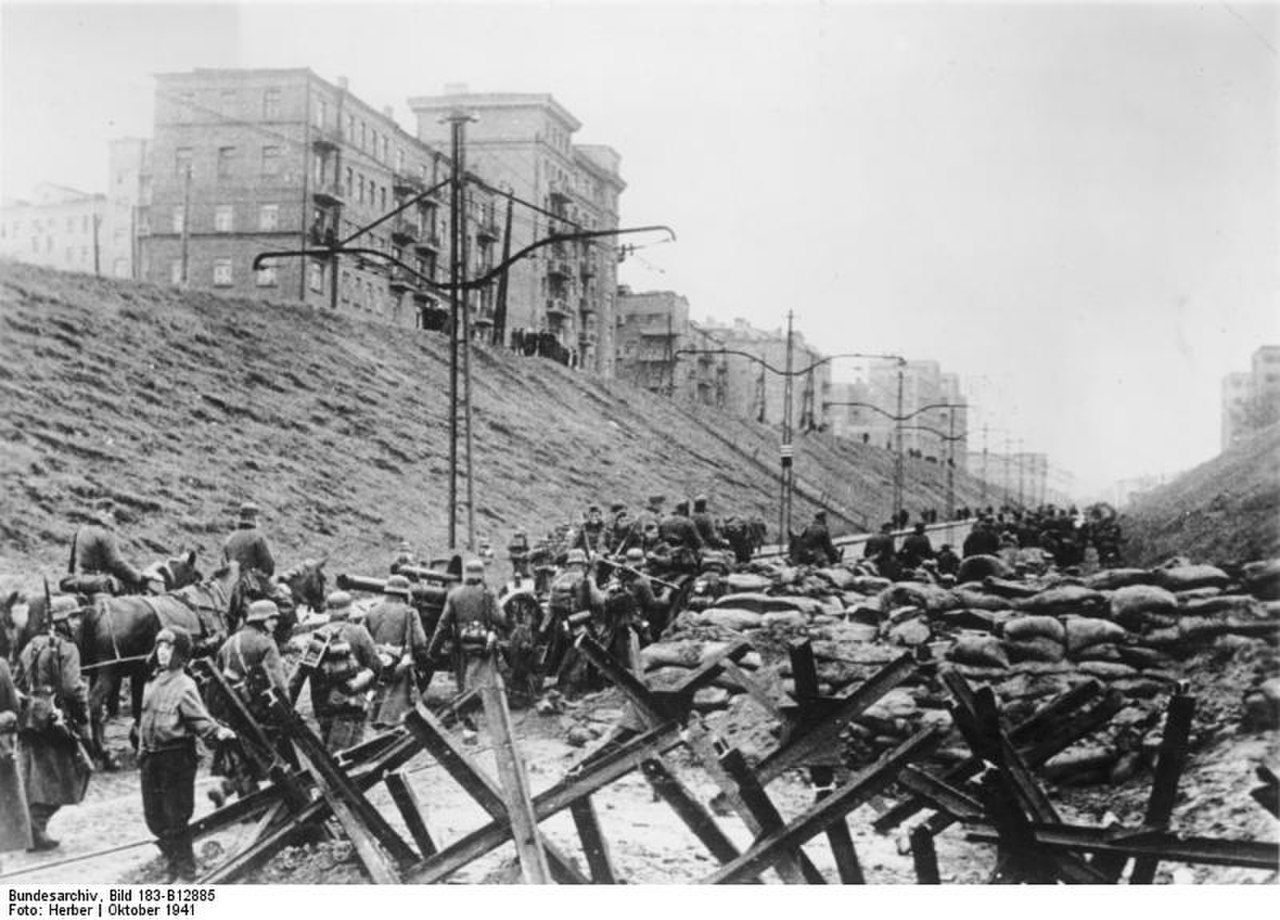 The top leadership of Nazi Germany attached particular importance to the Kharkiv industrial region. In August-September 1941, A. Hitler several times emphasized the importance of the industrial potential of Kharkov:
The top leadership of Nazi Germany attached particular importance to the Kharkiv industrial region. In August-September 1941, A. Hitler several times emphasized the importance of the industrial potential of Kharkov:
“… In second place in terms of importance for the enemy is the south of Russia, in particular the Donets basin, starting from the Kharkov region. The entire base of the Russian economy is located there. Mastering this area would inevitably lead to the collapse of the entire Russian economy… ”(A. Hitler at a meeting of the high military command on August 4, 1941).
“… The loss of such industrial centers as St. Petersburg and Kharkov would be tantamount to capitulation…” (A. Hitler, The Fuhrer’s main headquarters ” Wolfsschanze “, September 9, 1941).
Starting from the end of July 1941, Kharkov and the stations of the Kharkov railway junction were subjected to massive air raids by the Luftwaffe. At the same time, the main targets were railway and military facilities, residential areas of the city and warehouses of finished products of the most important enterprises. The factories themselves were practically not subjected to blows – the Germans clearly sought to preserve the production base of the Kharkov industrial region with a view to its further use.
Great importance was also attached to Kharkov as a transport hub that controlled the strategic direction Moscow-Caucasus. The possession of this knot made it possible not only to block the shortest route for the supply of Caucasian oil, but also made it possible to use it to prepare an offensive against the oil-bearing regions of the Caucasus. In addition, proximity to the rich agricultural regions of Ukraine made Kharkiv the center of concentration of food resources for the planned shipment of food to Germany.
Side Plans
Command plans for Army Group South
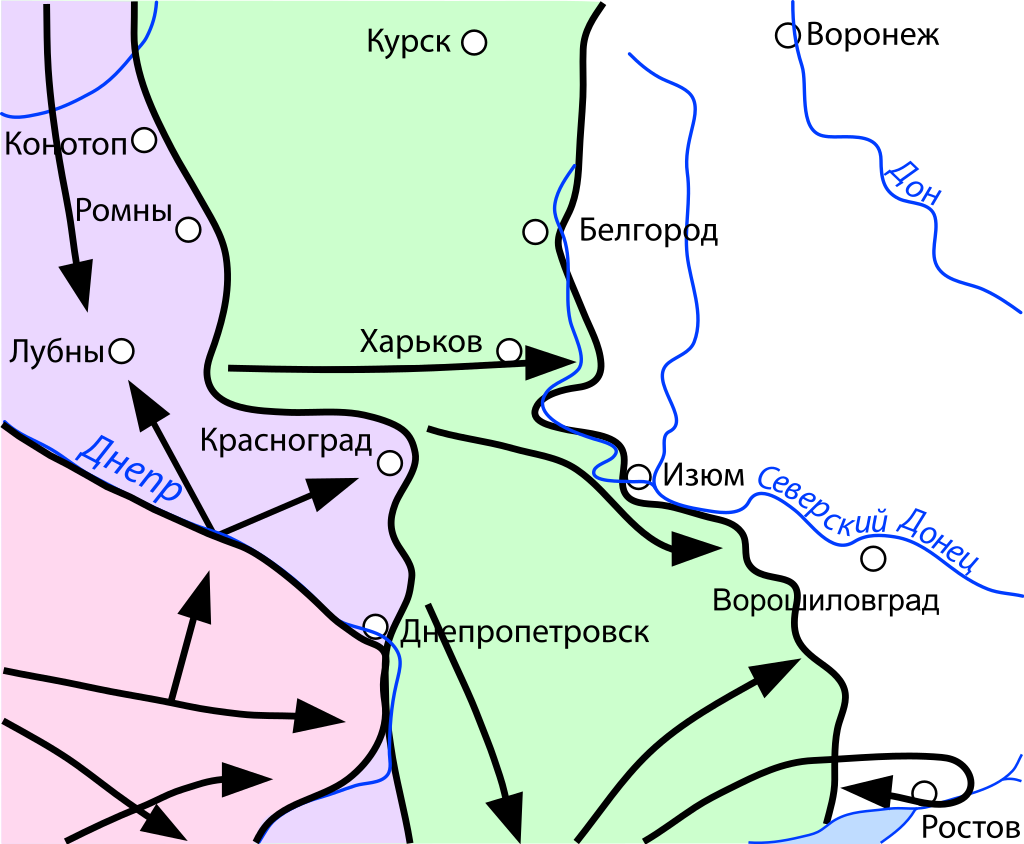 Directive OKV No. 34, the German troops of the Army Group “South” delivered the main blow in order to capture the Crimea, the industrial and coal regions of Kharkov and Donbass and to block the delivery of oil from the Caucasus. The main forces of the 1st Panzer and 11th Armies of the Wehrmacht were regrouping for an offensive in the zone of the Southern Front, and the main formations of the 17th Army were also allocated for this. The plan provided for converging strikes from the regions of Krasnograd and the Perekop Isthmus with the aim of encircling and defeating Soviet troops in the Melitopol region and further seizing the Crimea and Donbass.
Directive OKV No. 34, the German troops of the Army Group “South” delivered the main blow in order to capture the Crimea, the industrial and coal regions of Kharkov and Donbass and to block the delivery of oil from the Caucasus. The main forces of the 1st Panzer and 11th Armies of the Wehrmacht were regrouping for an offensive in the zone of the Southern Front, and the main formations of the 17th Army were also allocated for this. The plan provided for converging strikes from the regions of Krasnograd and the Perekop Isthmus with the aim of encircling and defeating Soviet troops in the Melitopol region and further seizing the Crimea and Donbass.
For the offensive in the Sumy-Kharkov direction, the 6th army of Field Marshal Walther von Reichenau was intended, the main formations of which were on the way after the liquidation of the encirclement boilers near Kiev. Support for the 6th Army was to be provided by units of the forces of the 17th Army. Inflicting frontal attacks, German troops sought to capture Kharkov, the third largest industrial center of the USSR. In addition, with its offensive, this army was supposed to secure the flanks of Army Groups Center and South advancing in different directions.
Plans of command of the South-Western Front
The front command planned its actions based on the directive of the Headquarters of the Supreme High Command No. 002374 on the transition of the troops of the Southwestern Front to the defense in order to prevent the enemy from seizing the Kharkov industrial region and Donbass. In accordance with this, the Kharkov direction was covered by two armies (21st and 38th), and Sumy by the 40th army. The 6th Soviet Army was instructed to eliminate the “Krasnograd ledge” of the enemy, the 38th Army, the largest in composition and numbers of the troops of the front, was also tasked with the direct defense of Kharkov.
Predicting the actions of the enemy in Left-Bank Ukraine, the Stavka, the General Staff and the front command believed that the main blow would be delivered to Kharkov from the regions of Poltava and Krasnograd. Accordingly, defensive work was carried out in these areas and a few reserves were concentrated. In the city itself, the forces of the garrison and the involved local residents prepared defensive positions that made it possible to conduct all-round defense.
On September 16, 1941, according to the plan approved by the State Defense Committee of the USSR, the evacuation of enterprises and the population of Kharkov and the Kharkov region began. Since the end of September, full-scale special measures have been carried out in the city to destroy and mine strategically important facilities and communications.
Evacuation and creation of the Kharkiv blockade
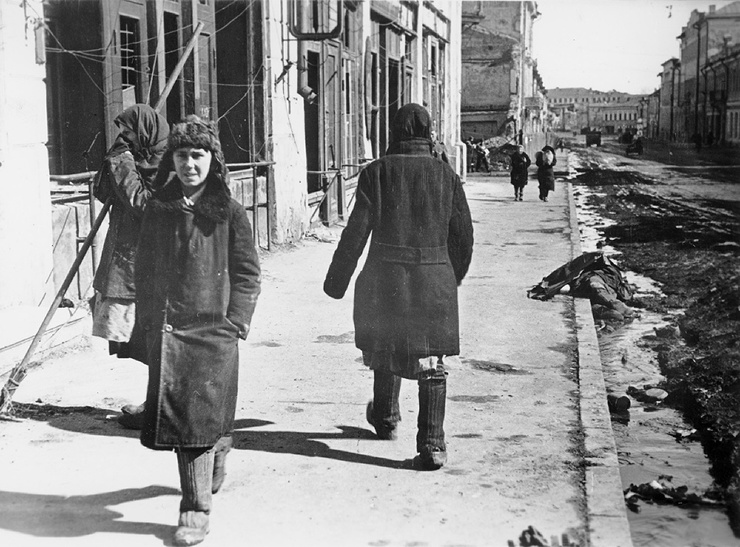 On September 16, 1941, the day after the encirclement of the troops of the South-Western Front in the Kiev region, the USSR State Defense Committee, by decrees 681 “On the evacuation of enterprises in Kharkov and the Kharkov region” and No. 685 “On the evacuation of women and children from Kharkov”, approved the schedule and plan evacuation of enterprises and population of Kharkov and Kharkov region. On September 30, 1941, by the decision of the Kharkov Regional Committee, the evacuation of livestock, agricultural machinery and harvested crops began. A little less than a month was allotted for the transfer of industry, agriculture and the population.
On September 16, 1941, the day after the encirclement of the troops of the South-Western Front in the Kiev region, the USSR State Defense Committee, by decrees 681 “On the evacuation of enterprises in Kharkov and the Kharkov region” and No. 685 “On the evacuation of women and children from Kharkov”, approved the schedule and plan evacuation of enterprises and population of Kharkov and Kharkov region. On September 30, 1941, by the decision of the Kharkov Regional Committee, the evacuation of livestock, agricultural machinery and harvested crops began. A little less than a month was allotted for the transfer of industry, agriculture and the population.
The evacuation of the largest strategic enterprises was started first: locomotive building, tractor and aircraft factories. KhPZ was transferred to Nizhny Tagil, to the site of Uralvagonzavod, Motor Plant No. 75 in Chelyabinsk, where “Tankograd” was created on the basis of the tractor plant, KhTZ was transferred to Stalingrad, and KhAZ – to Perm. City trams were used to speed up the evacuation of factories: their lines were brought to the territory of enterprises, due to which the dismantled equipment was transported immediately to the trains. In October, the evacuation of other enterprises also began. By October 20, 1941, the evacuation of industrial facilities was almost completed – 320 echelons with equipment from 70 large factories were sent from Kharkov to the rear, and the rolling stock of the Southern Railway was completely removed.
The evacuation of the region’s agriculture was also carried out successfully: more than 95% of the mechanized park, up to 90% of the cattle and horses were taken out of the region. All food industry enterprises located within the region (sugar, meat processing, alcohol, flour mills and bread factories) were put out of action. Nevertheless, the crops of beets, potatoes, and part of the cropped grain crop remained unharvested in the fields.
The most acute problem was the evacuation of the population. Sending people was carried out centrally at the request of enterprises and organizations through the evacuation departments of the city and party governments of Kharkov. First of all, party and administrative personnel, specialists, skilled workers, scientific and medical workers, as well as members of their families, were evacuated. Many workers and employees, teachers, cultural workers were among those who did not receive permission to evacuate. The evacuation of the Jewish part of the population was not carried out centrally, which made it possible for a number of researchers to accuse the Soviet administration of condoning the tragedy of Drobitsky Yar Nevertheless, by the time of the occupation of Kharkov, more than 90% of the Jews had left. In fact, the implementation of the GKO resolution on the evacuation of women and children from Kharkov was disrupted. At the time of the occupation of the city, women, the elderly and children accounted for 78% of the population, and women – more than 60%. In total, by October 20, 1941, 56 ambulance trains and 225 echelons with people were evacuated from Kharkov. A small number of residents managed to leave Kharkov along with the retreating Soviet troops by passing motor vehicles and horse-drawn vehicles.
At the end of September 1941, the State Defense Committee of the USSR decided to carry out, in the event of a retreat in Kharkov and the region, a number of special measures to disable industrial and food enterprises, railway junctions and communication centers, bridges, communication lines, power plants and other critical urban facilities. by undermining, arson and mining. In addition to Kharkov, such measures for the entire period of the Great Patriotic War were applied only to Moscow, Leningrad and Kiev. On September 27, 1941, this task was assigned by the General Staff to the colonel of the engineering troops I. G. Starinov. For its implementation, Starinov formed an operational-engineering group, and upon arrival in Kharkov, he was entrusted with the management of all mine-explosive work in the South-Western Front, including the creation of the Kharkov obstacle block and the mining of defensive lines. The colonel received five battalions of engineering troops, subdivisions of three railway brigades, and five separate flamethrower companies. The headquarters of the front allocated more than 110 tons of explosives, as well as more than 30,000 anti-tank and anti-personnel mines. In addition, it was supposed to use radio-controlled mines and mines with delayed fuses. To do this, the enterprises of Kharkov organized the production of shells for object and anti-vehicle mines (6,000 pieces were made), booby traps (2,000 pieces) and auxiliary equipment. The operation was controlled by a member of the Military Council of the Southwestern Front, First Secretary of the Central Committee of the Communist Party (b) of Ukraine N. S. Khrushchev.
Over 30,000 anti-tank and anti-personnel mines, about 2,000 delayed action mines, about 1,000 booby traps and over 5,000 decoy mines were laid in the Kharkov region. Mining was carried out on bridges, roads and railways in the following directions: Krasnograd – Kharkov, Poltava – Kharkov, Bogodukhov – Kharkov, Kharkov – Belgorod, Sumy – Belgorod. Hangars, airfield facilities and runways of all airfields adjacent to the city were mined. Directly in the city were mined, and subsequently destroyed, the central telephone exchange, power plants, water and sewer networks, the city’s central heating system, track and dispatch facilities of the stations of the Kharkov railway junction. Workshops and premises of all large enterprises of the city were destroyed, equipment that was not dismantled was damaged or mined. With the use of radio-controlled mines, Kholodnogorsky and Usovsky overpasses, a railway bridge, several mansions in the center of Kharkov (as the places of the alleged deployment of German headquarters) were also mined, and over 350 delayed-action mines and booby traps were installed in the city itself.
As a result of the evacuation and ongoing activities, Kharkov was deprived of strategic importance as the largest industrial and transport center, and prepared for surrender to the enemy with a destroyed industrial, urban and transport infrastructure. According to the calculations of specialists from the Ministry of the Occupied Eastern Territories, carried out after the capture of the city, only the industry of Kharkov was damaged in the amount of more than 30 million Soviet rubles.
Forces and composition of the parties
The section shows the alignment of forces of the German and Soviet troops participating in the hostilities in the Kharkov-Sumy direction from October 1 to October 30, 1941:
Germany
Commander of Army Group South, Field Marshal G. von Rundstedt
Commander of the 6th Army of the Wehrmacht, Field Marshal W. von Reichenau
Army Group South (Field Marshal G. von Rundstedt):
- 6th Army (Field Marshal W. von Reichenau)
- 29th Army Corps (General of the Infantry G. von Obstfelder):
51st Army Corps (Infantry General G. Reinhard):
17th Army Corps (Infantry General V. Kinitz):
55th Army Corps (Infantry General E. Firov):
17th Army (Colonel-General K. von Stülpnagel) - 11th Army Corps (Infantry General O. Eugen)
4th Army Corps (Infantry General W. von Schwedler):
52nd Army Corps (Infantry General K. von Brisen):
Hungarian Mobile Corps (Maj. Gen. B. Miklós von Dalnoki):
44th Army Corps (Infantry General F. Koch):
Total: 20 divisions, 2 brigades.
USSR
Commander of the Southwestern Front Marshal of the Soviet Union S. K. Timoshenko
Southwestern Front (Marshal of the Soviet Union S. K. Timoshenko):
- 40th Army (Lieutenant General K. P. Podlas)
- 21st Army (Colonel General Ya. T. Cherevichenko, from October 5 – Major General V. N. Gordov)
- 38th Army (Major General V. V. Tsyganov)
- 6th Army (Major General R. Ya. Malinovsky)
Total: 19 divisions, 8 tank brigades, 4 rifle brigades.
Battle
Battle October 1-15, 1941
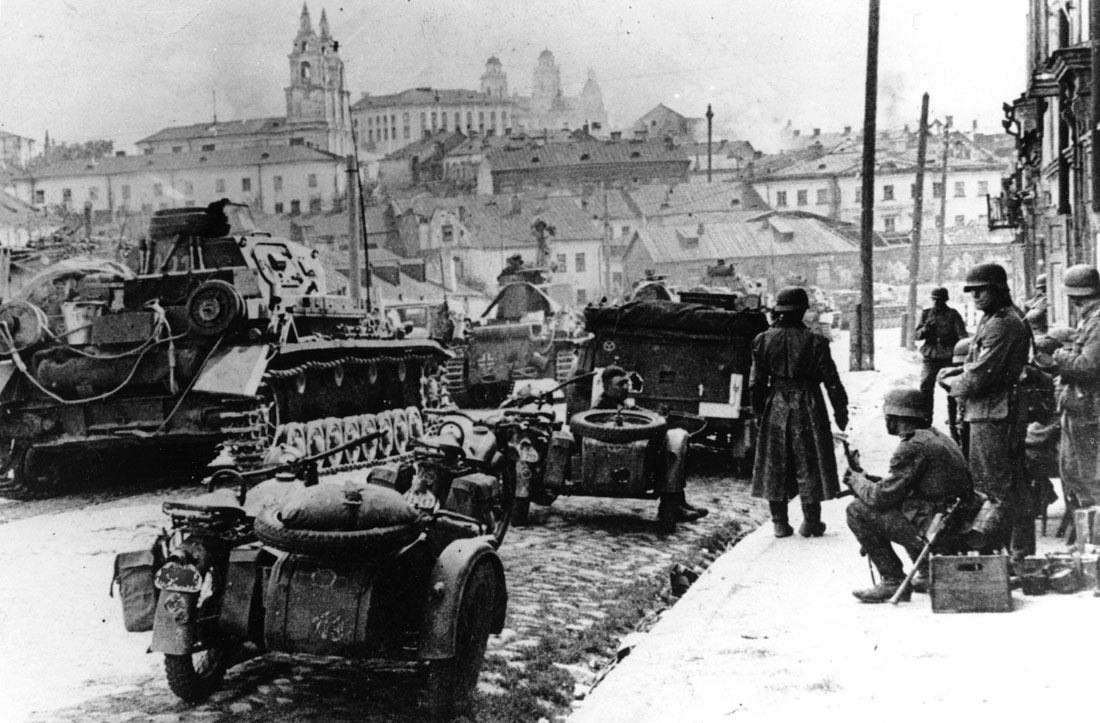
WW2 Battle
Kharkov was cut off from direct communication with the armies of the Red Army in the center of the Soviet-German front and from Moscow at night from September 30 to October 1, 1941. The Wehrmacht cut the railway and the Moscow-Simferopol highway in the area between Orel and Kursk near Kursk. The last convoy that “slipped” to Kharkov was the column of Colonel Starinov, who was heading to mine Kharkov. From October 1 to October 25, Kharkov communicated with the central regions of the country in a roundabout way through Voronezh-Kupyansk.
At the end of September 1941, in accordance with the directive of the headquarters of the Southwestern Front, the army of the front, in addition to formations of the 6th Army, equipped defensive lines. The 6th Army of Major General R. Ya. Malinovsky at that time was conducting active offensive operations in the Krasnograd region in order to liberate the city and cut off the enemy grouping that had penetrated. Fierce fighting in this area continued until October 5, 1941, but, despite all the efforts of the Soviet troops, units of the 52nd and 44th Wehrmacht army corps were able to hold their positions. In other sectors of the front, active hostilities of local importance were also conducted. In the Poltava direction, the 76th Mountain Rifle Division of the 38th Army found itself in a difficult situation, continuing to hold positions in the Chutovo area.and found itself in a semicircle. Based on an assessment of the current situation, Marshal S.K. Timoshenko, who was the coordinator of the actions of the Southwestern and Southern fronts, focused on strengthening the defense in the Krasnograd and Poltava directions. The 6th Army received significant reinforcements at the expense of the Southern Front, where other sectors of the defense were weakened.
On September 27 – 30, 1941, the German troops stationed on the territory of Ukraine launched a new offensive, conducting operations agreed on terms in the sectors of the Bryansk and Southern Fronts. The 1st tank group of Colonel-General E. von Kleist broke through the defenses of the weakened Southern Front in the Dnepropetrovsk region and entered the operational space. As a result, a number of units and formations of the 9th and 18th armies of the Southern Front were surrounded. At the same time, the 2nd Panzer Group of Colonel General G. Guderian, breaking through the defenses at the junction of the Bryansk and South-Western fronts, launched an offensive in the Oryol direction. Three armies of the Bryansk Front were surrounded, and on October 3, 1941, German tanks broke into Orel, cutting off the Kharkov-Moscow strategic highway and creating a direct threat to the capital of the USSR.
As a result of the German offensive, the troops of the Southwestern Front were enveloped from both flanks : the enemy deeply wedged into the defenses of neighboring fronts, and the depth of coverage was 60-200 kilometers, and communication with adjacent formations was lost. Under these conditions, on October 6, 1941, the command of the Southwestern Front decided to withdraw the right-flank armies (40th and 21st) 45-50 kilometers to the Sumy – Akhtyrka – Kotelva line in order to cover Belgorod and the northern approaches to Kharkov. The retreat of the Soviet troops took place under energetic pursuit by the enemy, who delivered butt-to-back blows to the retreating formations, creating a threat to their encirclement. As a result, the 29th army corps of the Wehrmacht broke into Sumy on the move, and the 51st captured Akhtyrka. The planned withdrawal line was occupied by the enemy, which forced the Soviet troops to retreat further to the east. Taking advantage of this, the 17th Army Corps of the 6th German Army hit the junction of the 21st and 38th Army and, inflicting heavy losses, broke through the defenses. The right flank of the 38th army was upset, the enemy captured Bogodukhov and created a direct threat to Kharkov from the north.
The situation escalated sharply in the southern sector of the Southwestern Front: on October 7, 1941, having broken through the defenses at the junction of the 38th and 6th Soviet armies, the main forces of the 17th Wehrmacht Army went on the offensive. The most important railway junctions of Lozovaya and Bliznyuki were captured by German troops, communication along the Kharkov- Rostov line was cut off and the crossings on the Seversky Donets were taken under control. The 6th Army, having lost contact with neighboring armies, was under the threat of encirclement. Three divisions of the 10th Reserve Army were sent to this area., formed in the Donbass, and the formations of the 6th Army were tasked with retreating 40-50 kilometers to the east. Pursuing the retreating Soviet troops, the 11th Army Corps of the Wehrmacht advanced along the Krasnograd-Kharkov highway, enveloping the city from the south.
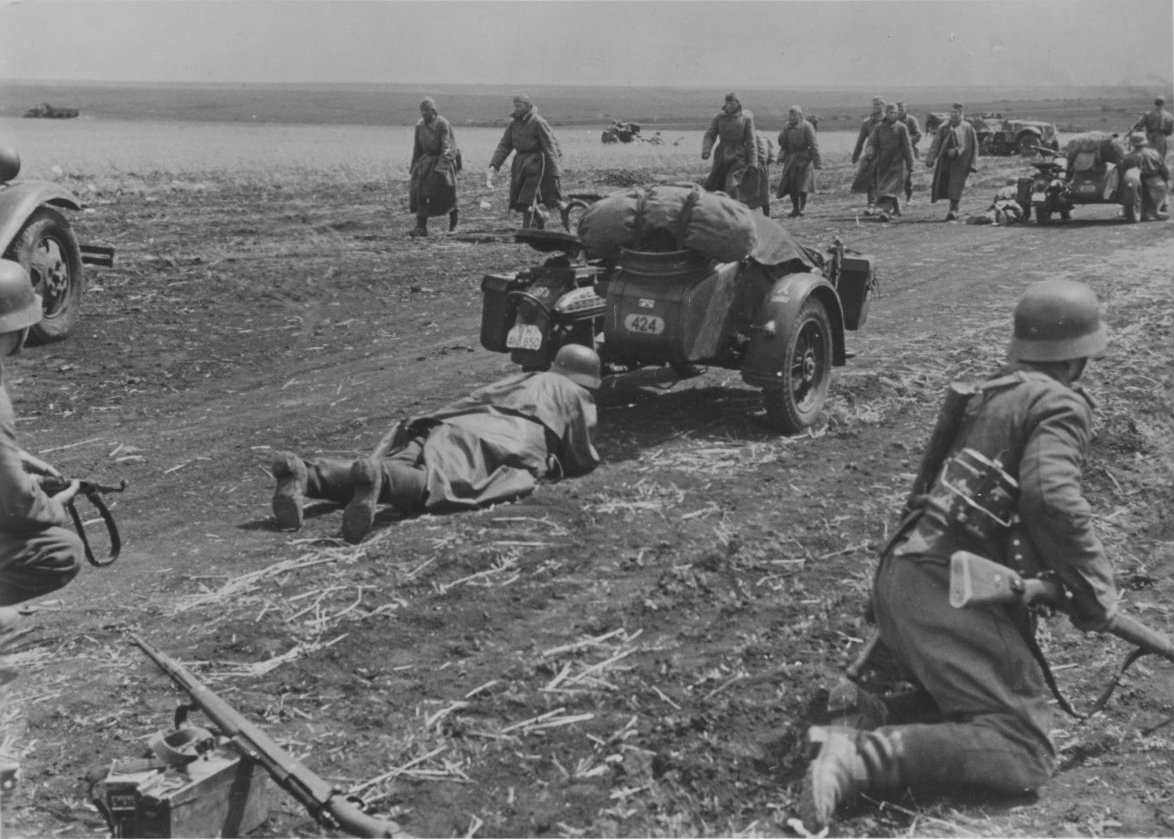 By October 15, 1941, the troops of the South-Western Front held the line along Krasnopolye – Bogodukhov – Valki – Donets. Most of the rifle divisions of the South-Western Front corresponded in number to the regiments, and the incoming replenishment without any preparation, immediately “from the wheels” was introduced into battle in parts, which led to heavy losses. The stability of the defense was created at the expense of tank brigades, which, acting as a mobile reserve, were transferred to the most threatened sectors. This tactic made it possible to avoid deep penetrations of the enemy’s defenses, but was achieved at the expense of heavy losses and wear and tear of personnel and military equipment. In mid-October, two tank brigades from the front had to be transferred to the location of the neighboring Southern Front, where a critical situation has developed.
By October 15, 1941, the troops of the South-Western Front held the line along Krasnopolye – Bogodukhov – Valki – Donets. Most of the rifle divisions of the South-Western Front corresponded in number to the regiments, and the incoming replenishment without any preparation, immediately “from the wheels” was introduced into battle in parts, which led to heavy losses. The stability of the defense was created at the expense of tank brigades, which, acting as a mobile reserve, were transferred to the most threatened sectors. This tactic made it possible to avoid deep penetrations of the enemy’s defenses, but was achieved at the expense of heavy losses and wear and tear of personnel and military equipment. In mid-October, two tank brigades from the front had to be transferred to the location of the neighboring Southern Front, where a critical situation has developed.
The German troops firmly held the initiative and, skillfully maneuvering, concentrated superior forces in order to break through the Soviet defense at the junctions of formations. As a result, by October 15, 1941, units of the Wehrmacht approached Kharkov at a distance of up to 50 kilometers and could attack the city simultaneously from three converging directions. Parts of the 38th Army prepared for the defense of the city, relying on the defensive area built around the city. Continuous lines of trenches with a total length of up to 40 kilometers were equipped along the outer contour, over 250 artillery and about 1000 machine-gun bunkers and dugouts were prepared, up to three thousand anti-tank hedgehogs. A 12-kilometer section on the western outskirts of the city was covered by electrified engineering barriers. In the city itself, several hundred barricades were erected on the central streets using over four hundred wagons of public transport. Also, 43 city bridges were mined, more than ten bridges that were not of great importance were destroyed in advance.
According to the participants in the hostilities, Kharkov was well prepared for defense, including in conditions of encirclement, and could be held for a long time. These data are confirmed by reports from the intelligence department of the 55th Army Corps of the Wehrmacht, who reported on the readiness of the Soviet troops to defend the city to the last. The situation changed dramatically on the evening of October 15 with the receipt of directive No. 31 of the Headquarters of the Supreme High Command, which set the task of withdrawing front troops to the line Kastornaya – Stary Oskol – Valuyki – Kupyansk – Krasny Limanand with access to this line for withdrawal to the front reserve of at least six rifle divisions and two cavalry corps.
“… The Headquarters of the Supreme High Command orders: from October 17, the Southwestern Front begins to withdraw to the line Kastornaya, Stary Oskol, Novy Oskol, Valuyki, Kupyansk, Kr. Estuary; finish it by October 30…” This meant that the troops of our front not only had to retreat from 80 to 200 kilometers, but also to leave Kharkov, Belgorod, the Donetsk industrial region.
The decision of the Headquarters was caused by the catastrophic situation that had developed in the defense zone of neighboring fronts, and the rapid pace of the German offensive in the Moscow direction.
Battle October 16-22, 1941
In accordance with the directive of the Headquarters, the front command gave orders to the headquarters of the armies to withdraw troops by October 20, 1941 to the intermediate defense line Oboyan – Belgorod – Merefa – Zmiev – Balakleya – Barvenkovo. The retreat of the front formations was carried out in three divergent operational directions: Belgorod (40th and 21st armies), Kharkov (38th army) and Izyum (6th army). As a result, the 38th Army, retreating, stretched its front of defense for 50 kilometers by lengthening its right and left flanks. In addition, the army was weakened due to the transfer of three divisions and two tank brigades to the front reserve. On the contrary, the German troops, having regrouped, concentrated the striking forces of the 6th and 17th armies of the Wehrmacht in the Kharkov direction. If the withdrawal of the remaining armies of the Southwestern Front took place in conditions of insignificant enemy opposition, then the formations of the 38th Army were subjected to vigorous pursuit. According to the schedule of the front headquarters, the 38th Army was to hold its positions at a distance of 30-40 kilometers from Kharkov until October 23, contributing to the completion of the evacuation and other events taking place in the city.
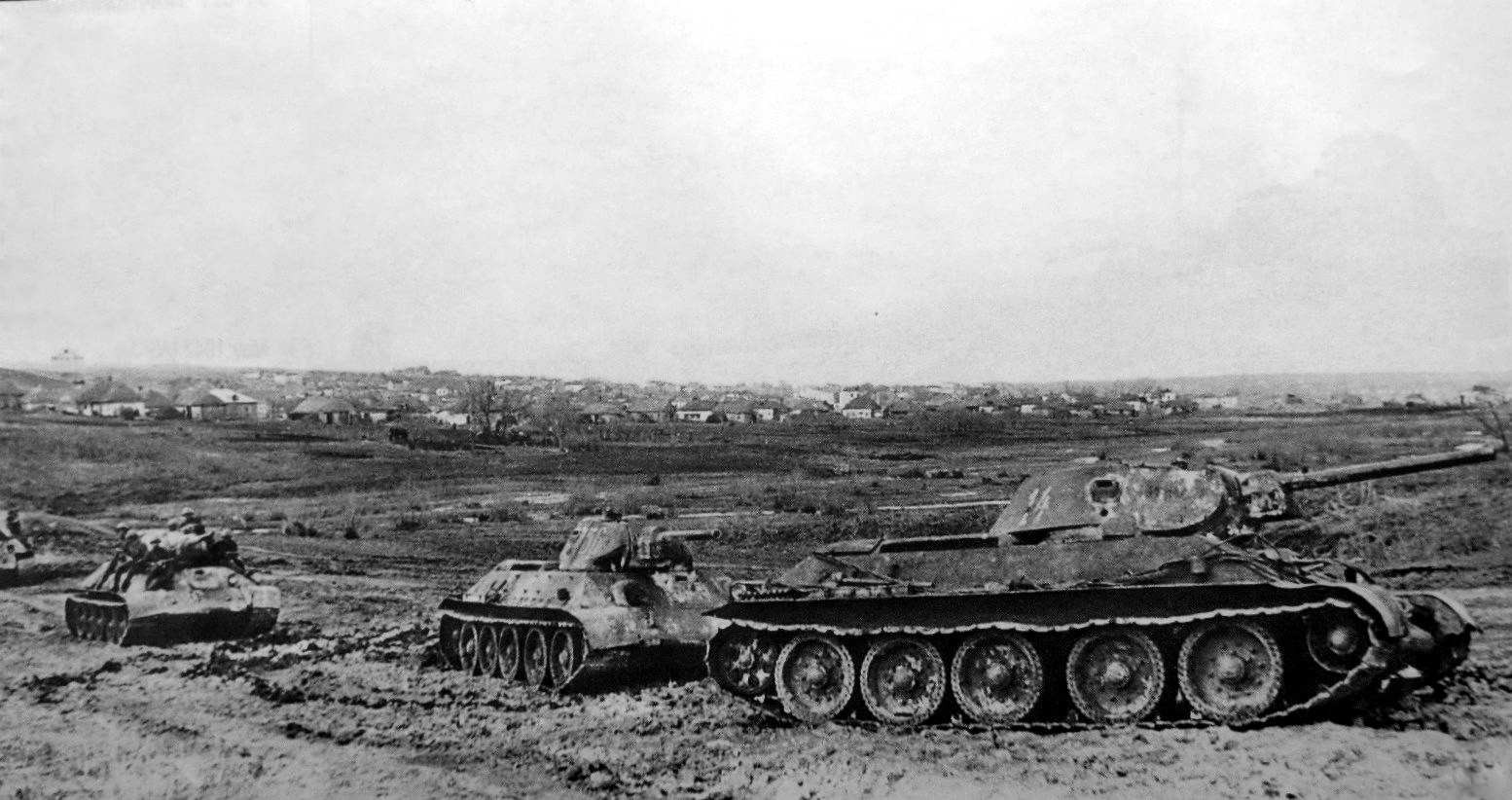 However, the plans of the Soviet command were thwarted by the German troops: on October 19-20, units of the 55th Army Corps captured the key defense point Lyubotin, and advanced patrols reached the suburbs of Kharkov – Pokotilovka and Pesochin. An attempt by a hastily organized Soviet counterattack to restore the situation failed. Over the next day, taking advantage of the inconsistency in the withdrawal of the formations of the 38th army, the 101st light division of the Wehrmacht occupies Dergachi, and parts of the 11th Army Corps of the 17th German Army – Zmiev. Kharkov is in a semi-encirclement, covered from three sides by the enemy. The retreating Soviet units: the 76th mountain rifle division and the 300th rifle division were driven back from the city, to the north and south, respectively, leaving a gap in the defense. For the immediate defense of Kharkov, only the forces of the garrison remained. German troops were able to freely occupy the suburban line of defense. In order to eliminate this, the commander of the 38th Army ordered the 216th Rifle Division, the main formation of the Kharkov garrison, to leave the city and prepare for defense by advancing to the Peresechnoye area. Making a forced march at night, the division, which consisted of poorly trained conscripts, fell into disarray: one of the regiments got lost and was found only after a day and a half, in addition, after a few hours an order was received to return to their original positions. As a result, the formation, having spent more than a day on concentration, noticeably lost its combat effectiveness. In addition, during the marches on October 19-20, up to 30% of the personnel deserted. By the end of October 20, 1941, German troops reached the city outskirts of Kharkov, and the Soviet units did not have a continuous line of defense. On the same day, the headquarters of the Southwestern Front received instructions from the Deputy Chief of the General Staff, A. M. Vasilevsky, to hold the Kharkov region for two to three days.
However, the plans of the Soviet command were thwarted by the German troops: on October 19-20, units of the 55th Army Corps captured the key defense point Lyubotin, and advanced patrols reached the suburbs of Kharkov – Pokotilovka and Pesochin. An attempt by a hastily organized Soviet counterattack to restore the situation failed. Over the next day, taking advantage of the inconsistency in the withdrawal of the formations of the 38th army, the 101st light division of the Wehrmacht occupies Dergachi, and parts of the 11th Army Corps of the 17th German Army – Zmiev. Kharkov is in a semi-encirclement, covered from three sides by the enemy. The retreating Soviet units: the 76th mountain rifle division and the 300th rifle division were driven back from the city, to the north and south, respectively, leaving a gap in the defense. For the immediate defense of Kharkov, only the forces of the garrison remained. German troops were able to freely occupy the suburban line of defense. In order to eliminate this, the commander of the 38th Army ordered the 216th Rifle Division, the main formation of the Kharkov garrison, to leave the city and prepare for defense by advancing to the Peresechnoye area. Making a forced march at night, the division, which consisted of poorly trained conscripts, fell into disarray: one of the regiments got lost and was found only after a day and a half, in addition, after a few hours an order was received to return to their original positions. As a result, the formation, having spent more than a day on concentration, noticeably lost its combat effectiveness. In addition, during the marches on October 19-20, up to 30% of the personnel deserted. By the end of October 20, 1941, German troops reached the city outskirts of Kharkov, and the Soviet units did not have a continuous line of defense. On the same day, the headquarters of the Southwestern Front received instructions from the Deputy Chief of the General Staff, A. M. Vasilevsky, to hold the Kharkov region for two to three days.
Under these conditions, the command of the 38th Army assumes direct control of the defense of the city, subjugating the headquarters of the defense of Kharkov, headed by Major General I. I. Marshalkov. In practice, this led to the fact that the Soviet units defending the city received sometimes conflicting orders simultaneously from two control centers – the headquarters of the army and the headquarters of the Kharkov garrison. The situation was aggravated by the fact that when the enemy approached Kharkov, power stations were blown up (including the supply lines of defensive electrical fences), water supply and the central telephone exchange. Since the garrison of Kharkov was not equipped with radio communications the leadership of the defense of the city was deprived of the possibility of promptly obtaining information and command and control of troops during the hostilities.
On October 21, German troops regrouped before a decisive assault on Kharkov. It was decided to capture the city by the forces of the 55th Army Corps of the 6th Army, for which the 101st Light and 239th Infantry Divisions were reassigned to it, and heavy artillery units were also attached. In order to disrupt preparations for the offensive on October 22, Soviet troops, unexpectedly for the enemy, launched a counterattack with the forces of the 57th NKVD brigade and two regiments of the 216th rifle division in the direction of Kuryazh -Pesochin. During the day, protracted battles continued, and by evening the Soviet troops retreated to their original positions. As a result of the actions of the garrison units, the enemy suffered losses, but it was not possible to prevent the assault on Kharkov scheduled for October 23.
Battle in Kharkov 23-25 October 1941
The offensive was planned by the command of the 55th Army Corps of the Wehrmacht at 12.00 Berlin time and was to be carried out by the forces of three divisions, one more division was in reserve. The main blow was delivered by the 57th Infantry Division, which carried out a frontal offensive from the west with the support of units of the 101st and 100th Light Infantry Divisions advancing from the north and south. In each battalion of divisions, assault groups were created, the basis of which were infantry units, reinforced by sappers, light infantry guns, motorcyclists and armored vehicles. The actions of the infantry were preceded by intensive artillery preparation, carried out by heavy divisions of army subordination using 211-mm heavy mortars and 150-mm heavy howitzers. For operations in urban areas, infantry divisions were given divisions of assault guns, and as anti-tank weapons , batteries of 88-mm heavy anti-aircraft guns.
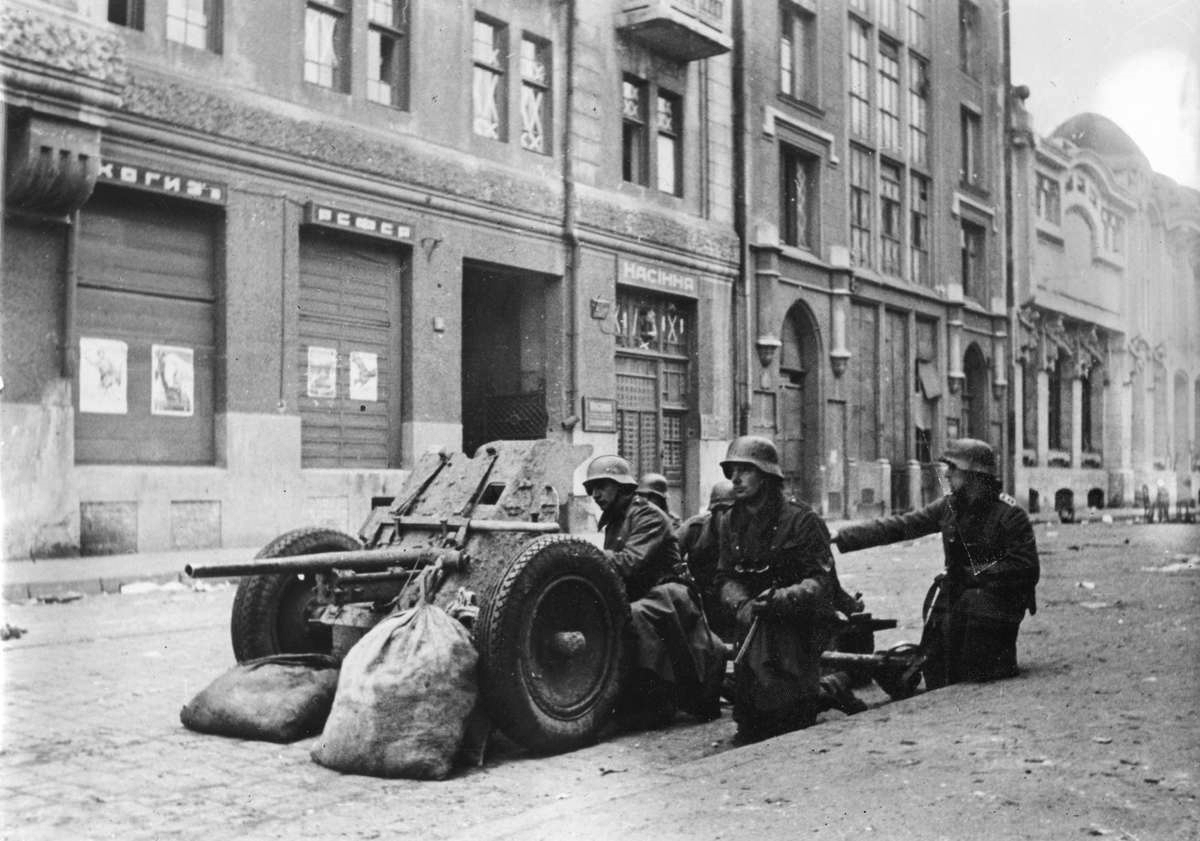 For the direct defense of Kharkov, the 216th rifle division, the 57th rifle brigade of the NKVD, the Kharkov regiment of the people’s militia, separate battalions of local rifle troops, and an armored (anti-tank) detachment were involved. The most combat-ready military unit among all parts of the garrison was the 57th rifle brigade of the NKVD, under the command of Colonel M. G. Sokolov, which had a high level of combat training and was well equipped with automatic weapons. The 216th Rifle Division, under the command of Colonel D.F. Makshanov, was formed in early October 1941 from conscripts and rear servicemen units, had no combat training, but was well armed. The Kharkov regiment of the people’s militia and the battalions of local rifle troops consisted of local residents of different age categories who signed up as volunteers and had a weak level of combat training. The personnel were armed exclusively with rifles. A separate (armored) anti-tank detachment included 47 units of obsolete armored vehicles (25 – T-27, 13 – T-16 (KhTZ), 5 – T-26, 4 – T-35). The total number of troops in the garrison of the city of Kharkov was 19,898 people with 120 guns and mortars.
For the direct defense of Kharkov, the 216th rifle division, the 57th rifle brigade of the NKVD, the Kharkov regiment of the people’s militia, separate battalions of local rifle troops, and an armored (anti-tank) detachment were involved. The most combat-ready military unit among all parts of the garrison was the 57th rifle brigade of the NKVD, under the command of Colonel M. G. Sokolov, which had a high level of combat training and was well equipped with automatic weapons. The 216th Rifle Division, under the command of Colonel D.F. Makshanov, was formed in early October 1941 from conscripts and rear servicemen units, had no combat training, but was well armed. The Kharkov regiment of the people’s militia and the battalions of local rifle troops consisted of local residents of different age categories who signed up as volunteers and had a weak level of combat training. The personnel were armed exclusively with rifles. A separate (armored) anti-tank detachment included 47 units of obsolete armored vehicles (25 – T-27, 13 – T-16 (KhTZ), 5 – T-26, 4 – T-35). The total number of troops in the garrison of the city of Kharkov was 19,898 people with 120 guns and mortars.
On the morning of October 23, 1941, German troops began reconnaissance in force, and, as a result, a few hours later they entrenched themselves in the residential areas of the New Bavaria region on the western outskirts of Kharkov. At noon, after the end of artillery preparation, the main forces of the 57th Infantry Division went on the offensive. Slowly moving along Sverdlov Street and streets parallel to it towards the railway station, the German assault groups overcame fierce resistance from units of the 216th Infantry Division. Along the entire length of the streets, barricades, ditches and minefields built at each intersection prevented the advance of the enemy. By evening, units of the 57th division of the Wehrmacht reached the railway line in the area of the Kholodnogorsk overpass, which was partially blown up by Soviet sappers, but infantry could move along the surviving part. The 100th light infantry division of the Wehrmacht, advancing from the south, met stubborn resistance from the 57th rifle brigade of the NKVD, and had no tangible success. The greatest success on the first day of the fighting for Kharkov was achieved by the 101st light infantry division, whose units, having occupied the Lysa Gora area, managed to capture the Kuzinsky bridge north of the station and, having overcome the railway line, reached the western bank of the Lopan river. Attempts by individual units of the Wehrmacht to bypass the city and break into it from the north along the Belgorod highway were thwarted by militia units at the defensive lines in Sokolniki. As a result of the first day of fighting, the German troops managed to capture the western regions of Kharkov and reach the railroad that crossed the city from north to south, and in some areas even overcome it. Under these conditions, fearing encirclement, the commander of the 216th Infantry Division decided to withdraw his units to the eastern bank of Lopan, occupying the second line of defense. Upon learning of this, the command of the 38th Army canceled the order to withdraw and ordered the next day to drive the enemy out of the western part of Kharkov with a counterattack. However, by this time the Soviet troops had already retreated across the river, and the sappers had begun undermining the bridges. In general, summing up the results of the first day of fighting, we can conclude that the organized defense of the city did not work out. Lacking proper combat training, the Soviet units defending Kharkov, immediately after the enemy managed to break into its outskirts, succumbed to panic and began to hastily retreat to its center. Due to the lack of the necessary means of communication and poorly organized interaction between units and subunits, the command and defense headquarters already in the first hours of the battles for the city almost completely lost control over the actions of the troops.
On the morning of October 24, 1941, German troops occupied the city blocks between the railway and the river and reached the banks of the Lopan. Moreover, due to the failure of explosive devices, several bridges across the river turned out to be intact, including the central one, Bolshoy Lopansky. For six hours, one of the regiments of the 57th division of the Wehrmacht, with the support of artillery, aviation and assault guns, tried to capture this bridge and drive the Soviet troops out of the fortifications on Universitetskaya Gorka. Other parts of the division, having managed to force the river to the south, went to the area of the Balashovka and Levada railway stations and the industrial enterprises adjacent to them. Having crossed Lopan, units of the 101st Light Division went to Klochkovskaya Street and launched an offensive in divergent directions: along Kultury Street through Gorky Park to the aircraft factory; along the descent of Passionaria to Gosprom on the central Dzerzhinsky Square and along Klochkovskaya towards the center, along the Lopan River. Fierce battles unfolded on Dzerzhinsky Square and the adjacent Karl Liebknecht Street, where units of the people’s militia held the line for more than five hours under the onslaught of superior enemy forces. Parts of the 57th NKVD Rifle Brigade were still stubbornly defending, which, having entrenched themselves in the area of the Osnova station, repulsed the attacks of the 100th Wehrmacht light division. By three o’clock in the afternoon, the central regions of Kharkov were captured by German troops. Resistance was of a focal nature and turned out to be the forces of scattered individual units and detachments. The command of the 38th Army was inclined to the decision to give an order for an immediate withdrawal from Kharkov, but the directive of the headquarters of the Southwestern Front ordered it to hold the city until the end of October 25. An attempt at a counterattack, organized by the defense headquarters, involving the last reserves, led to a meeting battle on Stalin Avenue near Rudnev Square, but was not successful. By evening, units of the Wehrmacht reached the eastern outskirts of Kharkov, and the remnants of the garrison, concentrating in the area of Saburova dachabegan to retreat to the east. The order to withdraw was given by the commander of the 216th Infantry Division D.F. Makshanov, who was dismissed from his post in the morning by order of the army commander, but since the division headquarters had no connection with the army headquarters, the latter continued to lead the troops during the battles for the city. The new division commander, brigade commander F. F. Zhmachenko, managed to find and reassign only two battalions. Until October 27, the division was actually controlled by two centers.
On the night of October 25, 1941, the commander of the garrison forces, Major General I. I. Marshalkov and the brigade commander F. F. Zhmachenko, several special barrier detachments were put up on the possible withdrawal routes of the troops, whose duty was to detain the troops leaving the city. By morning, units assembled overnight, with forces of up to two regiments, Soviet troops took up defense in the area of the tractor plant and the KhTZ village, located outside the city, but administratively part of it. During the day, there were minor clashes with the reconnaissance and advanced units of the Wehrmacht, as the main forces of the 55th Army Corps Conducted a cleansing of the city, eliminated individual pockets of resistance and carried out sapper-engineering work. Already on the first day of the occupation, 116 Kharkiv residents were publicly executed. On the night of October 25-26, 1941, Soviet troops retreated beyond the Seversky Donets.
Orders of the German command about the capture of Kharkov
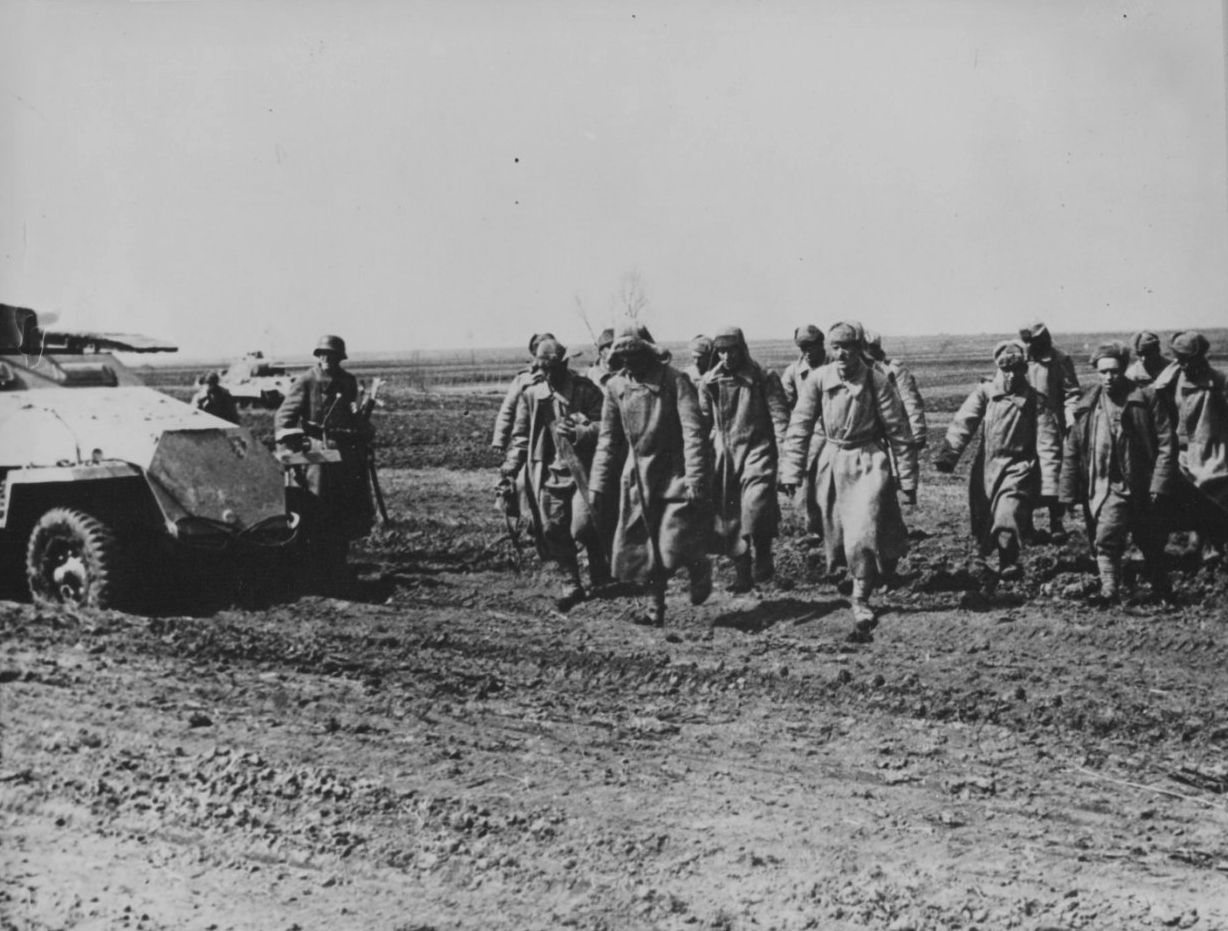 “In a heavy two-day battle against the Bolshevik troops and the civilian population, entrenched in field positions, hiding in buildings and anti-tank ditches, behind wire fences and minefields, we occupied the southern part of Kharkov. The highest demands were placed on the units during the battles. Each of you has done a great job. I express gratitude and deep gratitude to you who fought for Kharkov! With your deeds, you have written a new glorious page in the history of the 57th division. Your names will remain in it forever. Major General Dostler “(from order No. 94 of October 24, 1941, commander of the 57th Infantry Division)
“In a heavy two-day battle against the Bolshevik troops and the civilian population, entrenched in field positions, hiding in buildings and anti-tank ditches, behind wire fences and minefields, we occupied the southern part of Kharkov. The highest demands were placed on the units during the battles. Each of you has done a great job. I express gratitude and deep gratitude to you who fought for Kharkov! With your deeds, you have written a new glorious page in the history of the 57th division. Your names will remain in it forever. Major General Dostler “(from order No. 94 of October 24, 1941, commander of the 57th Infantry Division)
“Soldiers! Kharkov, Russia’s third largest industrial city, is taken. This proud success is due to your courage. In a fierce struggle, step by step, you pushed back a highly stubborn enemy from Poltava. You endured all the hardships of the weather: rain, snow and frost. You drove your cars through mud and mud. You have steadfastly and firmly overcome unspeakable difficulties. You did not retreat until the enemy was finally defeated. Soldiers, we are proud of you! Only future history can fully do justice to your glory. You can be proud that you have taken a big step towards the final victory. To all the commanders and troops I declare special gratitude and express my deep gratitude. Forward to the victory! Infantry General Firov “(from order No. 17 of October 25, 1941 of the commander of the 55th Army Corps)
Front line stabilization
While the formations of the 38th Army were fighting in the Kharkov direction, the rest of the armies of the Southwestern Front continued to withdraw. On October 24, 1941, having broken through the defenses of the 21st Soviet Army, units of the 29th Army Corps captured Belgorod. The withdrawal of Soviet troops took place in extremely difficult weather conditions. Roads were washed out by continuous rains, and the troops operated in impassable conditions. In addition, a significant part of the equipment began to stop on the routes due to lack of fuel. The same problems were experienced by the German units of Army Group South that were pursuing them. Therefore, the main opposition to the retreating troops of the Southwestern Front was provided by enemy aviation forces. The headquarters of the Army Group “South” and the command of the 6th Army of the Wehrmacht considered the tasks of the autumn campaign completed and planned to go on the defensive in this sector of the front. Already on October 27, the main forces of the 40th, 21st and 38th armies broke away from the enemy and had no contact with him. The battles were fought only by formations of the 6th Soviet Army, holding the defense along the Seversky Donets. By the end of October, German troops, exerting slight pressure, crossed the Donets and, having created several bridgeheads on the eastern bank, went on the defensive. Under these conditions, the command of the Southwestern Front decided to stop the withdrawal of troops and go on the defensive in the Tim -Balakleya – Izyum and further along the Seversky Donets River to Yampol. This milestone made it possible to ensure the uninterrupted operation of the railway line Kastornoe – Kupyansk – Lisichansk. Also, this configuration of the front line made it possible to prepare for further operations of the Red Army in order to liberate Kharkov as soon as possible.
Results and consequences
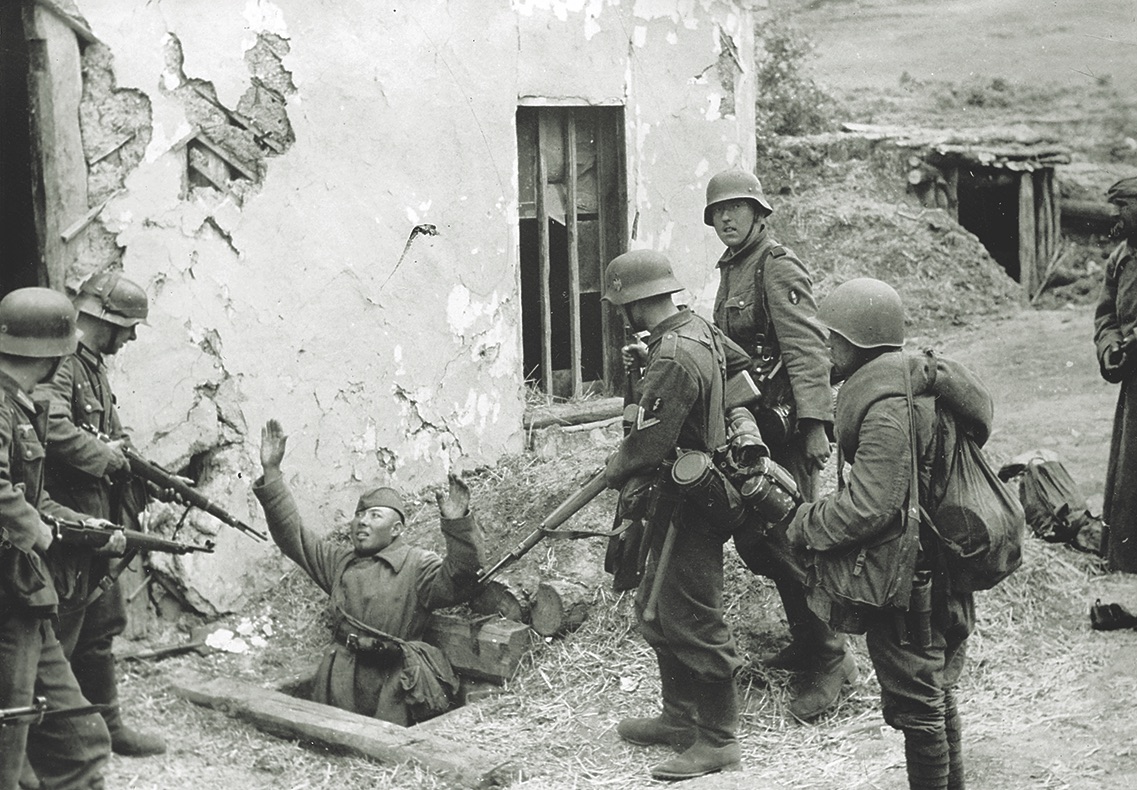
Kharkov WW2
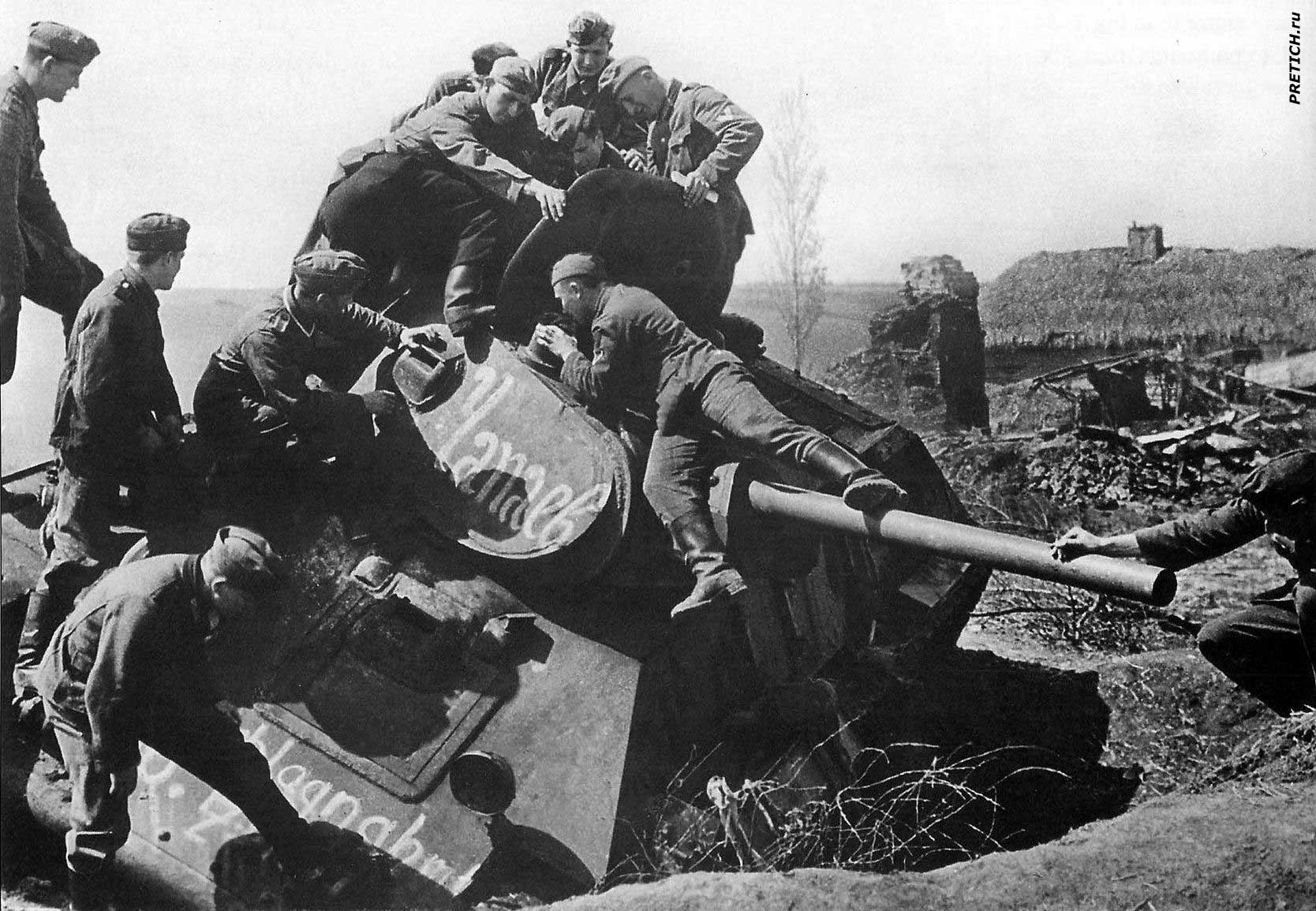 With the capture of Kharkov and Belgorod and access to the Donets, the 6th Army and the main forces of the 17th Army of Army Group South, having completed the tasks of the autumn campaign of 1941, stopped active offensive operations and went on the defensive. Offensive operations in the southern sector were carried out by the 11th army of E. von Manstein with the aim of capturing Crimea and the 1st tank group of E. Kleist, advancing on Rostov-on-Don. The Sovinformburo announced the abandonment of Kharkov only on the evening of October 29, citing absolutely fantastic enemy losses: 120,000 people killed and wounded, more than 450 tanks, over 200 guns. The retreat from Kharkov was explained by the strategic considerations of the Soviet command. It was not reported that over 460,000 inhabitants were under occupation with all the ensuing consequences.
With the capture of Kharkov and Belgorod and access to the Donets, the 6th Army and the main forces of the 17th Army of Army Group South, having completed the tasks of the autumn campaign of 1941, stopped active offensive operations and went on the defensive. Offensive operations in the southern sector were carried out by the 11th army of E. von Manstein with the aim of capturing Crimea and the 1st tank group of E. Kleist, advancing on Rostov-on-Don. The Sovinformburo announced the abandonment of Kharkov only on the evening of October 29, citing absolutely fantastic enemy losses: 120,000 people killed and wounded, more than 450 tanks, over 200 guns. The retreat from Kharkov was explained by the strategic considerations of the Soviet command. It was not reported that over 460,000 inhabitants were under occupation with all the ensuing consequences.
When analyzing the course of hostilities, it becomes obvious that in the first half of October 1941, the German command, when planning and carrying out operations in the Left-Bank Ukraine, set as its goal not to squeeze out the Soviet troops, but to cover the grouping of the Southwestern Front with the subsequent possibility of encirclement due to deep penetrating strikes. Since the Wehrmacht was in full possession of the initiative and had a certain superiority, the Soviet command adhered to a defensive strategy, trying to predict the actions of the enemy and carry out retaliatory countermeasures. Mistakenly assuming that the main target of the enemy is the Kharkov industrial region, the command of the South-Western direction concentrated its main forces and few reserves here, while weakening the Southern Front. After the development of the German offensive and the defeat of neighboring fronts, the troops of the Southwestern Front found themselves in a kind of ledge, and an inelastic defense could lead to a repetition of the Kiev pocket. Under these conditions, the decision of the Headquarters to leave the Kharkov industrial region, part of the Donbass and withdraw troops was the only correct one. Moreover, the immediate threat to Moscow forced the Soviet leadership to transfer reserves to this direction from other sectors of the Soviet-German front.were transferred from the Southwestern Front to defend Moscow.
In the second half of October 1941, all the actions of the Soviet troops, including the direct defense of Kharkov, were strictly linked to the schedule for the withdrawal of formations of the Southwestern Front and the course of evacuation measures. At the same time, there was no military need to conduct hostilities in the city itself, and the population of many thousands was exposed to unnecessary danger. In his memoirs, I. Kh. Bagramyan, who in October 1941 was the head of the operations department of the headquarters of the Southwestern Front, writes about the battles in Kharkov as “bleeding for the enemy”. However, already on October 25, 1941, they will sum up the defense of Kharkov:
The defensive capabilities of Kharkov were used to a very minimal extent. Barriers, structures, barricades were also poorly used…. The defense headquarters of Kharkov panicked and fled from Kharkov on October 24, having lost control of the troops. Losses to the enemy were not inflicted according to the available capabilities. Settlements were defended weakly and ineptly (from the negotiations of the chief of the operational department of the headquarters of the South-Western Front with the chief of staff of the 38th Army).
Considering that by the end of October the troops of the Southwestern Front had switched to a solid defense on the lines outlined by the Headquarters, and the enemy did not show activity in this area, the Soviet command considered the results of the Kharkov operation to be generally satisfactory.
Taking into account the human, industrial and transit potential of Kharkov, we can conclude that it was the largest city in the USSR occupied by the Wehrmacht during the war. Having captured the city, the German command planned to immediately use the industrial and transport capabilities for their own purposes. However, after examining over 190 important industrial and transport facilities, German experts stated the extreme degree of their destruction as a result of hostilities, deliberate damage and evacuation of equipment and personnel. Having made tremendous efforts to restore the infrastructure, the German administration achieved some success: already in May 1942, Kharkov became a major repair and maintenance base for the Wehrmacht in the southern sector of the front, where armored, aviation, railway equipment and other types of weapons were repaired. The possibilities of Kharkov as a transport hub were restored in full by the beginning of 1942, and after that the city, as the largest center of communications played a crucial role in the plans of the German command.
The Soviet leadership was also well aware of the importance of Kharkov and made great efforts for the speedy return of the “first capital” of Ukraine. During the winter of 1942 – spring 1943, the Soviet troops carried out several large-scale strategic operations to capture Kharkov. As a result of their unsuccessful outcome, the city gained a reputation as a “cursed place of the Red Army”. The city was finally liberated from German troops only on August 23, 1943. By this time, according to various estimates, the population of Kharkov amounted to only 190-230 thousand people (out of pre-war more than 900 thousand).


